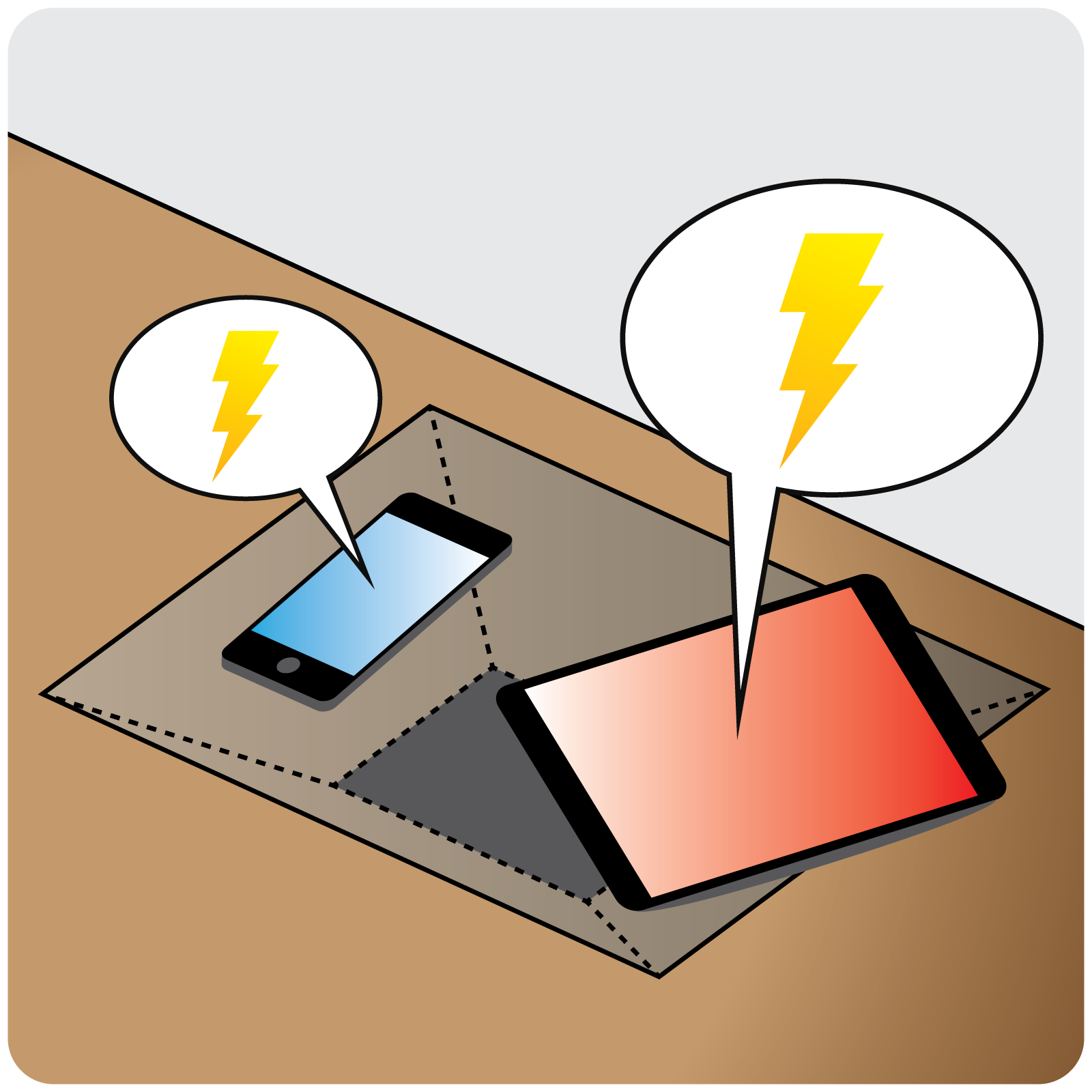A wireless charging system consists of a charging pad connected to a power source, and a mobile device that receives energy from the pad when the two are in close proximity, thus charging the battery. First-generation Qi (pronounced “Chee”) products were based on tight inductive coupling (magnetic induction) between a transmitter/receiver pair and thus charged one device at a time. They required specific positioning on the pad, and the mobile device had to practically be in contact with the pad to charge. The loose inductive coupling technique that seeks to supplant it, magnetic resonance, offers inches of charging range, simultaneous charging of multiple devices (even those with different power requirements), and free-form positioning, ideal for charging vehicles and wireless charging in countertops.

The Alliance for Wireless Power (A4WP), an industry organization for wireless charging based on resonance, recently launched Rezence, wireless charging via magnetic resonance, with products projected by mid-2014.
Meanwhile, the Wireless Power Consortium (WPC), parent of the 5-year-old Qi standard, is looking to incorporate magnetic resonance technology. Work to update the Qi specification is still underway, but successful demonstrations were held at CES 2014. Goals include higher efficiency and lower radio frequency interference than other resonant solutions, and backward compatibility with an installed base of 40+ million Qi devices.
Leading Qi chipmaker Texas Instruments (TI) and New Zealand's PowerbyProxi, both WPC steering members, announced a licensing agreement at CES. TI, whose wireless charging technology is in 80% of Qi-enabled devices, will leverage PowerbyProxi's expertise and patents to develop new products. The collaboration will produce resonant solutions compatible with Qi.
In early 2013, TI indicated an intention to develop multi-mode wireless charging ICs that support Qi, A4WP, and a third wireless charging standard. Power 2.0, championed by the Power Matters Alliance (PMA), is magnetic-induction based with no recent announcements about magnetic resonance. However, Qualcomm, one of the founders of the A4WP and a proponent of magnetic resonance, joined the PMA last fall with the intent to co-chair a working group with Wi Tricity to define a “dual-mode” specification to seamlessly support both technologies.
In December 2013, Toyota announced that it had signed an IP agreement with Wi Tricity to license its magnetic resonance technology for application in recharging electric vehicles. Toyota's 2016 model of electric vehicle is predicted to be the first with built-in wireless charging.
Apple has not yet integrated wireless charging, but this may change. Apple was noted this past December for winning a patent on wireless charging based on magnetic resonance technology. IEEE has also formed a working group to develop Standard Specifications for Wireless Power and Charging Systems, starting early 2014.
Competing wireless charging approaches have until now maintained a unique identity, but differences diminish as we move to next-gen products. It is not clear whether the three main standards will converge. However, magnetic resonance technology will play a starring role in the future.
By Mouser Electronics
Advertisement
Learn more about Mouser Electronics





